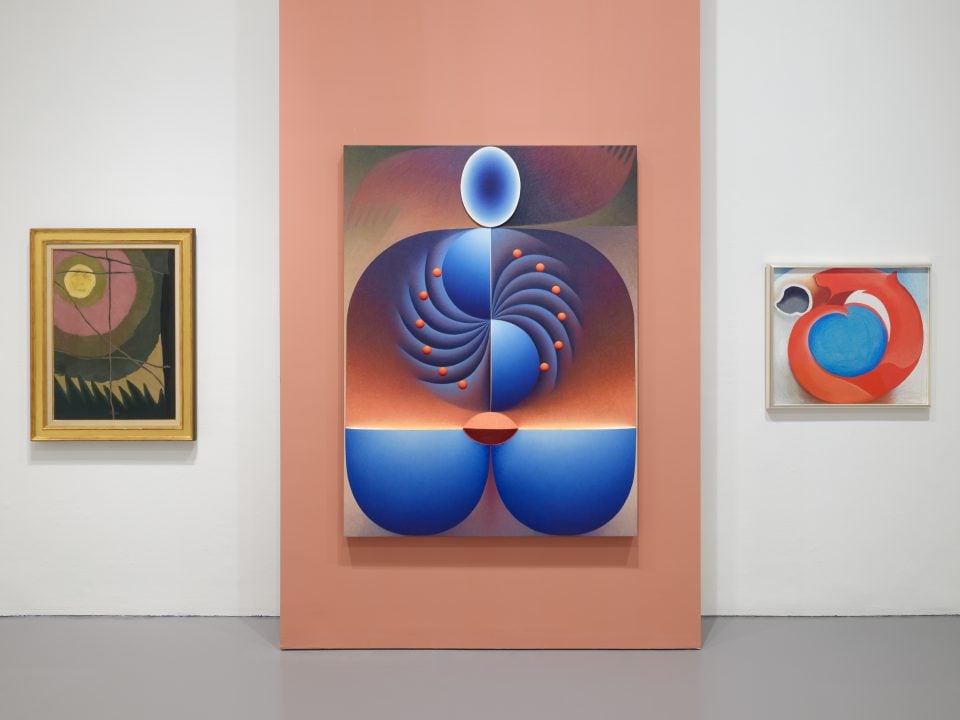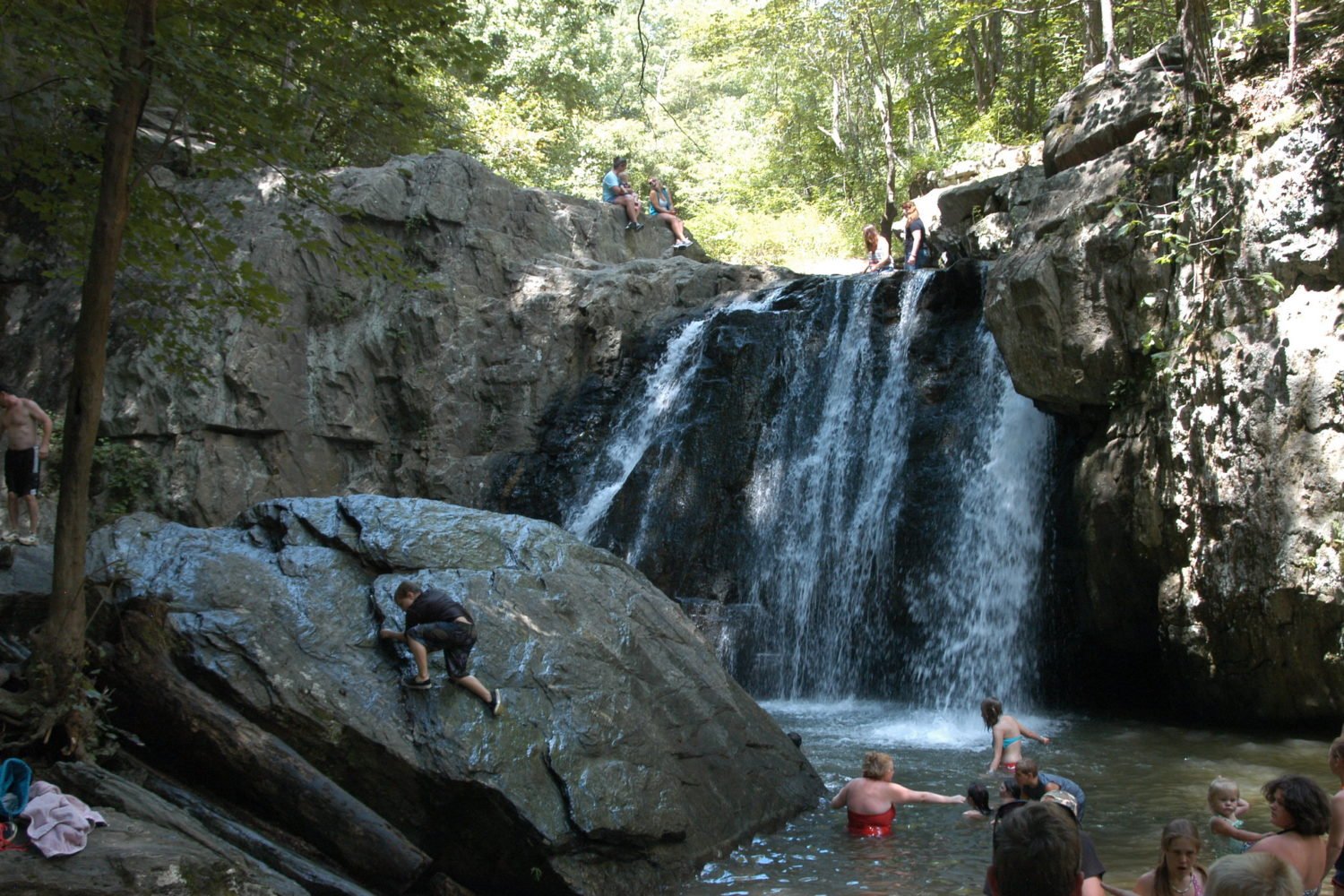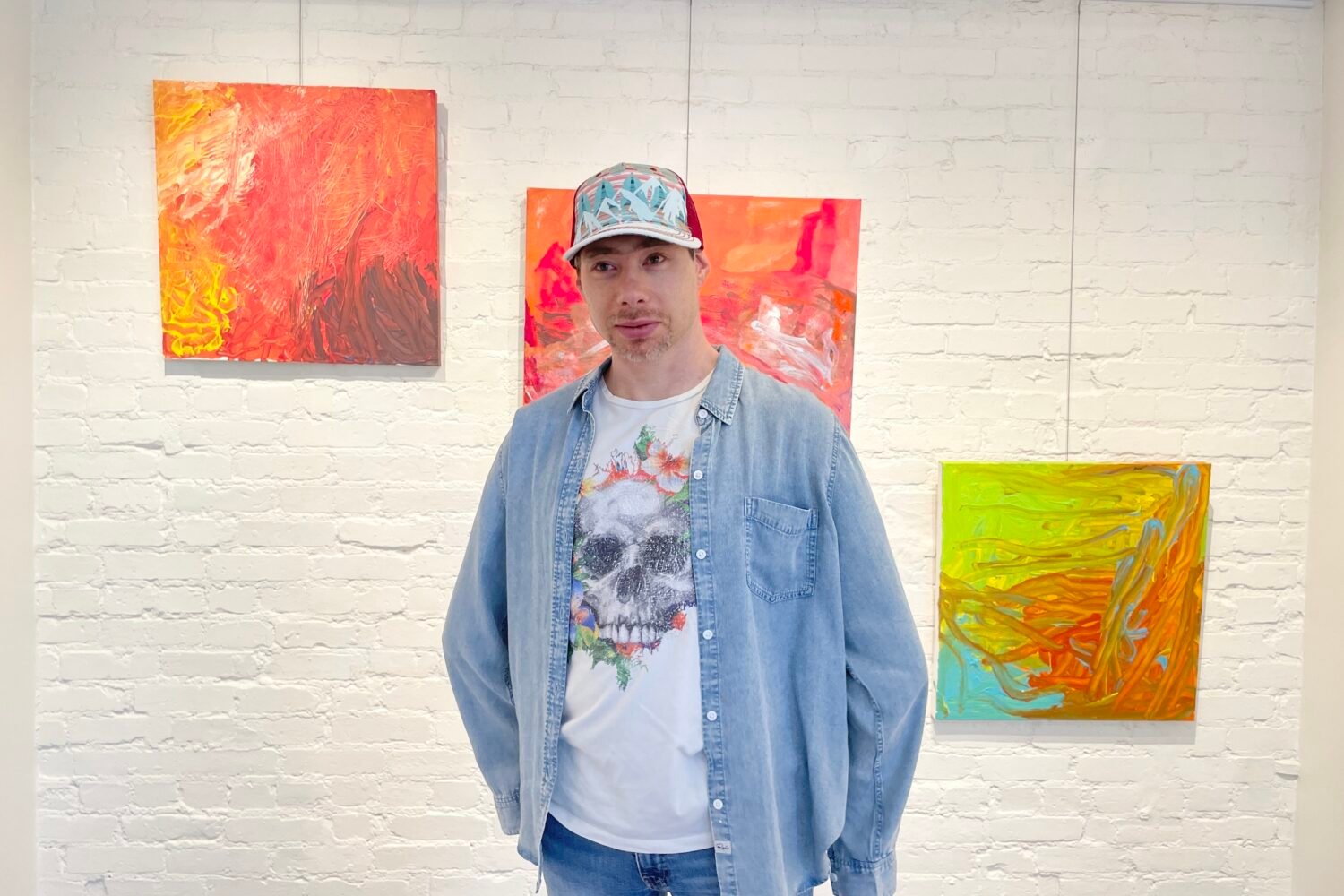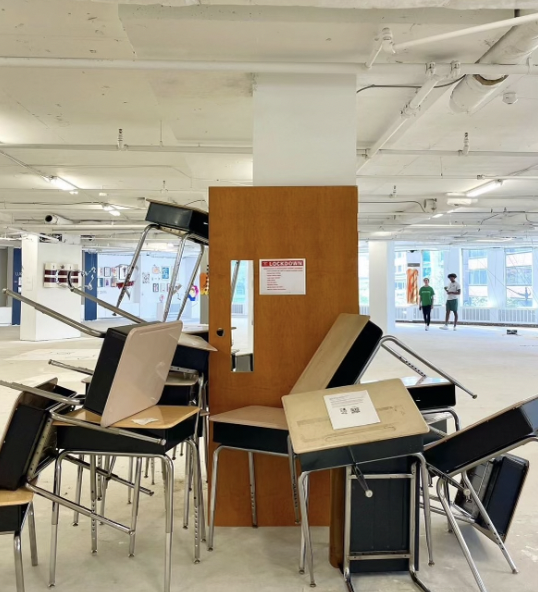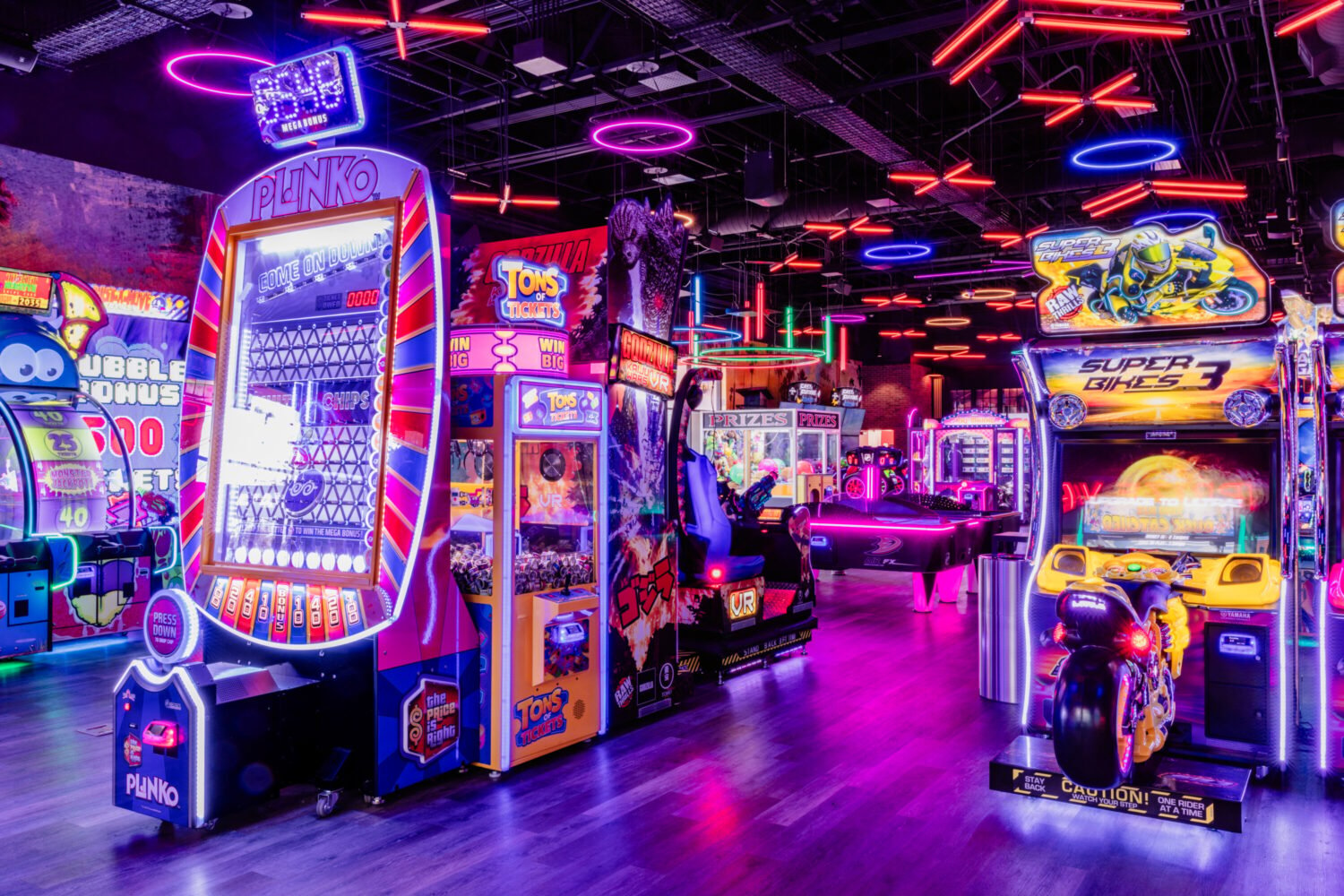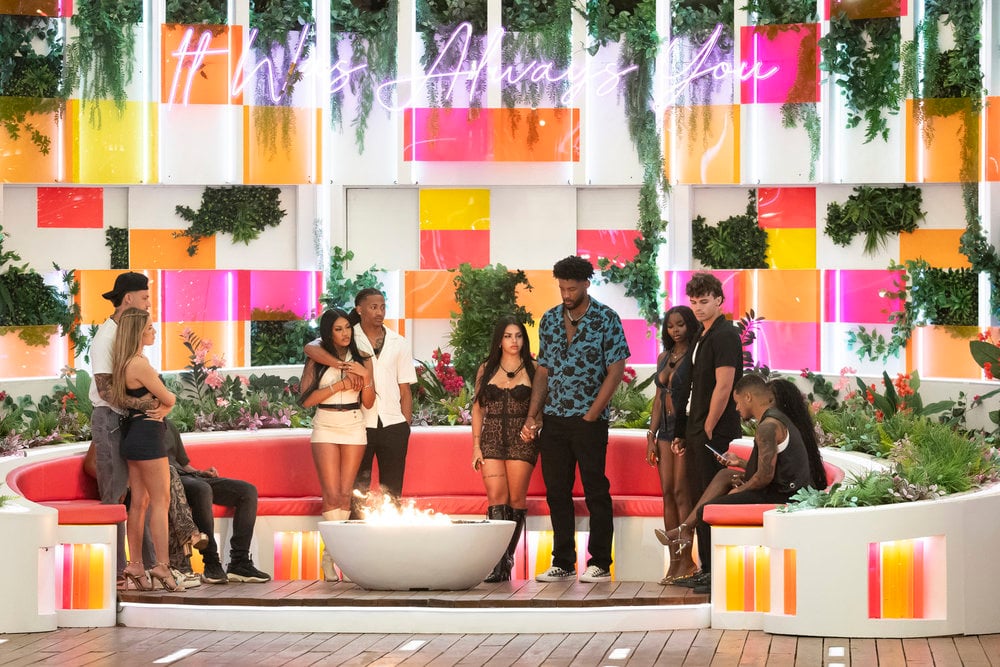To commemorate 50 years since it first opened its doors, the Hirshhorn is putting 100 years of modern artwork on display. The new exhibit “Revolutions: Art from the Hirshhorn Collection, 1860-1960” opens Friday and will remain in the second-floor outer-circleo galleries until April 20, 2025.
The Hirshhorn Museum and Sculpture Garden officially opened on October 4, 1974, a few years after financier Joseph Hirshhorn donated almost 6,000 pieces of modern art and sculptures to the federal government. “Revolutions” showcases the wide breadth of the museum’s permanent collection, including many pieces from Hirshhorn’s original gift. On opening day, 208 artworks from over 100 artists will be featured, including ones from Georgia O’Keeffe, Pablo Picasso, and Jackson Pollock. Some light-sensitive pieces will be switched out over the course of the exhibit’s run and replaced with others from the collection.
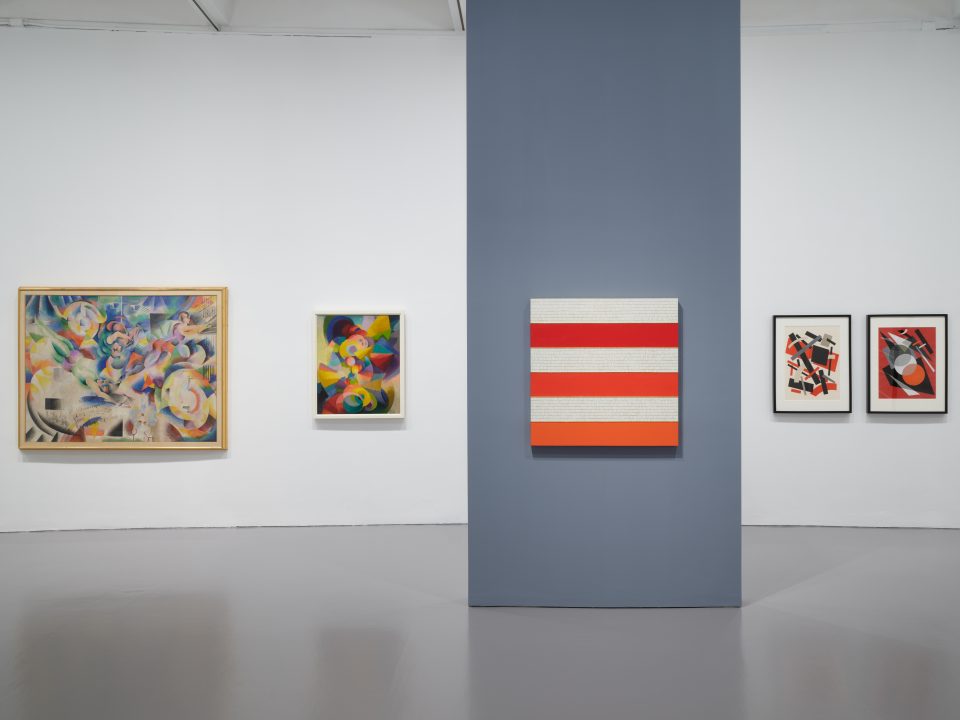
In addition to highlighting Hirshhorn’s history, “Revolutions” also surveys a century of immense artistic change and chronicles the rise of Abstraction. The exhibit opens with a look at late-19th-century portraiture and early parlays into unconventional forms from artists like Auguste Rodin, then moves into galleries that examine the many Abstract movements which defined the early 20th century—including Cubism, Futurism, and Surrealism. The second half focuses on postwar movements like Abstract Expressionism, in which artists like William de Kooning (a favorite of Hirshhorn’s) grappled with questions of representation and explored new forms of expression. Throughout all the galleries, a theme of rebellious innovation comes through, with artists continuously pushing the boundaries of existing movements and forging their own paths.
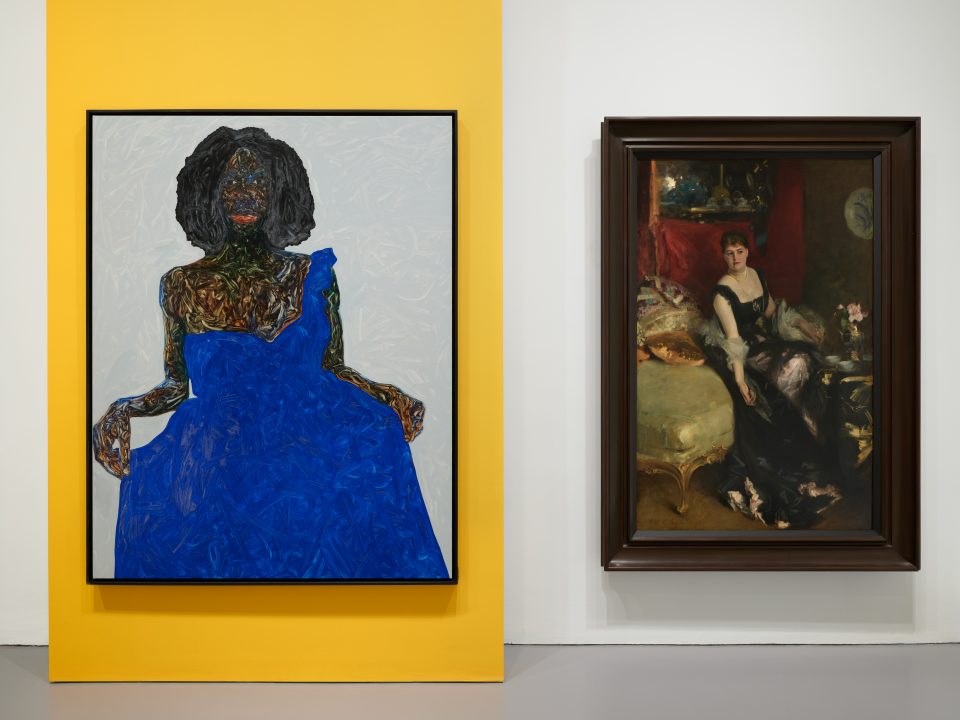
The exhibit is mostly chronological, but on colored walls throughout, you’ll find recently-acquired contemporary works that are placed “in conversation” with the older pieces. For instance, at the very start, two large-scale portraits are placed side-by-side: John Singer Sargent’s 1884 “Mrs. Kate A. Moore,” which was part of Hirshhorn’s initial gift, and Amoako Boafo’s 2020 “Cobalt Blue Dress.” The placement of these 19 “conversational” pieces invites viewers to think both about how present-day artists comment on the works of their predecessors, just as the modern artists of 1860-1960 challenged the old guard of their eras.
“The Hirshhorn opened in 1974 as a modern art museum,” says Hirshhorn Director Melissa Chiu. “It has since become a modern and contemporary museum, largely because of Joseph H. Hirshhorn’s vision that his foundational gift should meet the needs of a national museum dedicated to the art of our time. ‘Revolutions’ reminds us that we are connected to an art-historical continuum through engagement with artists, artwork and ideas.”
“Revolutions: Art from the Hirshhorn Collection, 1860-1960” ushers in a season of free public programming at the museum. On opening day, contemporary artists Torkwase Dyson and Flora Yukhnovich, whose work is on display in the exhibit, will give an Artist Talk at 6:30 pm—advance registration is at-capacity, but there will be a day-of standby line. To find out more about the pieces in the collection, you can listen to a nine-stop audio tour voiced by author Katy Hessel anytime, or attend free curator tours on April 26 and October 18. For kids, an “Art Cart” of interactive activities inspired by pieces in the collection will be available on weekends; young artists can be inspired by the hanging mobiles of Alexander Calder this week. Looking ahead, a free 50th-birthday celebration for the museum is set for October 4.

